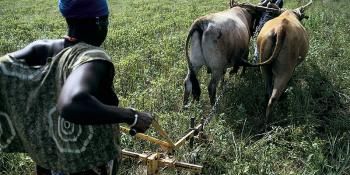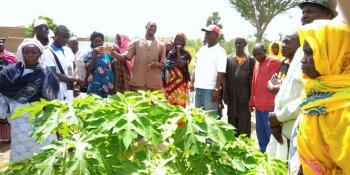Arabica coffee production at risk due to changing climate

Two new studies warn about the possible impacts of rising temperatures on the production of the Arabica coffee.
Coffee ranks just after oil in its value among traded commodities and is grown in more than 60 tropical countries. Coffee is produced by around 25 million producers, 70% of whom are smallholder farmers directly dependent on coffee for their livelihoods. As a crop, coffee has been hard hit by climate change but at the same time, coffee cultivation continues to contribute to global greenhouse gas emissions. Researchers working in the CGIAR Research Program on Climate Change, Agriculture and Food Security (CCAFS) have been investigating the possibilities of making coffee production climate-smart and climate-friendly.
Related: Coffee & climate change, a round-up story
In the last month, two studies by CCAFS partners were published on the effect of climate change on coffee production. One of them is a new study by Alessandro Craparo from the International Institute of Tropical Agriculture (IITA) which shows evidence that climate change is already having an impact on the Arabica coffee sector in the East African Highlands region. The study describes that over the last 49 years, there has been a +1.42 °C increase in night temperatures which has led to yield decreases in Arabica of 195 kg/ha. The consequences for smallholders in the region are dramatic as it represents losses of 46%.
The other study by Oriana Ovalle-Rivera and Peter Läderach at the International Center for Tropical Agriculture (CIAT) argues that intercropping with trees to provide shade, or moving to higher elevations where it is cooler, can compensate for higher temperatures by two to three degrees. Generally, coffee will need to move between 300 to 500 meters further above sea level depending on location to survive. That’s feasible in Ethiopia or Kenya along the Great Rift Valley, where Coffea Arabica originated and elevations reach 2,400 meters above sea level. But in Brazil for example – the world’s largest coffee producer and exporter, accounting for around a third of global trade – is already cultivated at low elevations and can’t shift further upwards.
These two studies may give the coffee sector the hard figures required to encourage the public and the private sector to invest in climate change adaptation strategies that will better sustain the industry and the livelihoods of millions of smallholder farmers who depend on it. The two studies also call for approaches at the local scale to help farmers to adapt to climate change.
Read:
IITA Press Release, 27 April 2015: Report provides evidence of how climate change affects Arabica coffee growing areas
CIAT Blog, 27 April 2015: New coffee study a wake-up call
Download the studies:
A.C.W. Craparo, P.J.A. Van Asten, P. Läderach, L.T.P. Jassogne, S.W. Graba. 2015. Coffea arabica yields decline in Tanzania due to climate change: Global implications. Agricultural and Forest Meteorology 207:1-10.
Ovalle-Rivera O, Läderach P, Bunn C, Obersteiner M, Schroth G. 2015. Projected Shifts in Coffea arabica Suitability among Major Global Producing Regions Due to Climate Change. PLoS ONE 10(4): e0124155.



